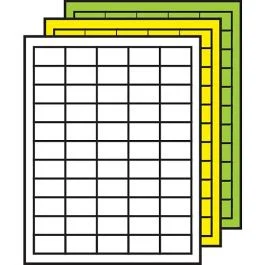what is Label and its used in library

What is Labels
Labels are small, adhesive or non-adhesive tags that are used to identify, organize, and categorize items. They can be made of various materials, such as paper, plastic, or metal, and can come in a wide range of sizes and shapes. Labels can be applied to a variety of surfaces, including paper, plastic, metal, and glass.
Labels are widely used in many different fields and industries, including retail, packaging, shipping and receiving, inventory management, and organization. They can be used to label products, boxes, and containers, to identify items within a warehouse or store, or to track items during shipping and receiving.
In libraries, labels are used to identify and organize books, journals, and other materials on the shelves. They may include the title, author, call number, and other information about the item. Labels can also be used for labeling files, folders, and other organizational items in offices.
Labels can also be used for personal or household organization, such as labeling storage containers, pantry items, and other items.
There are various types of labels, such as self-adhesive, peel and stick, thermal transfer, and direct thermal labels, each with its own specific uses and benefits.
Library Labels
Library labels refer to the small tags or labels that are used to identify, organize, and categorize items within a library collection. These labels are usually found on the spine or cover of a book or other library material and contain information such as the title, author, call number, and other relevant details.
Library labels serve several important functions in a library. They are used to  help patrons locate and identify specific items in the collection, by providing information such as the title, author, and call number of the item. They also help library staff to organize and maintain the collection, by providing information such as the location of the item within the library and its status (i.e. checked out or available).
help patrons locate and identify specific items in the collection, by providing information such as the title, author, and call number of the item. They also help library staff to organize and maintain the collection, by providing information such as the location of the item within the library and its status (i.e. checked out or available).
In addition, library labels can also be used to provide additional information about an item, such as its subject matter, the language in which it is written, or whether it is a reference item or not. They also can include barcodes that can be scanned for inventory management or loan tracking.
Overall, library labels play an important role in the organization and management of a library’s collection, making it easier for patrons to locate and access materials, and for staff to maintain the collection.
